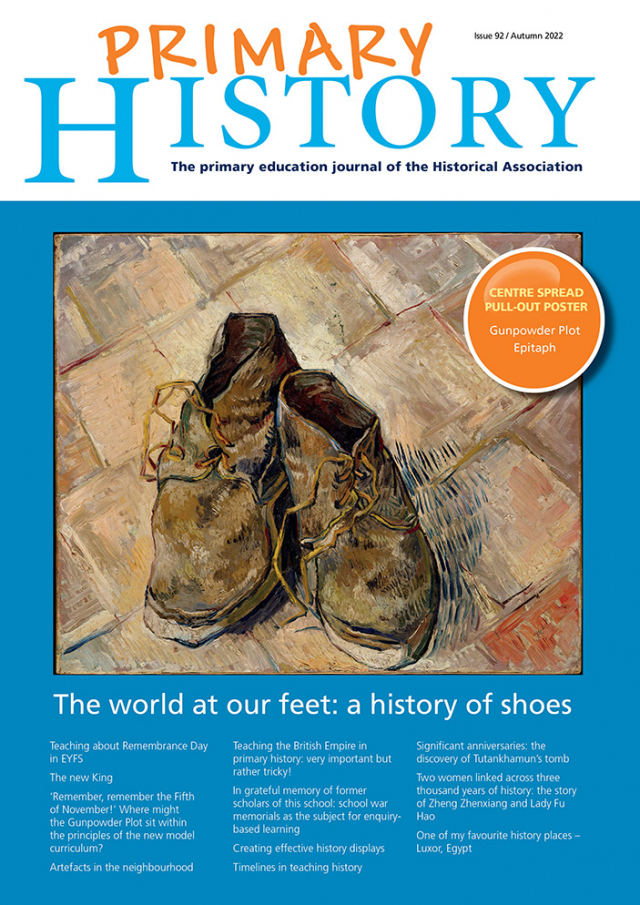Primary History 92: Out now
The primary education journal of the Historical Association

Editorial
It seems like such a short while ago that we were all joyfully celebrating the platinum jubilee (or platy joobs) and yet this edition contains an article focused on our new monarch, King Charles III, and some of the changes we are having to get used to.
Clearly the death of death of her Majesty the Queen was a rupture that while, not unexpected, was still shocking. We, and the children in our classes, have lived through a time of change, a moment in history that joined many of us together. We have been witness to some of the solemn pageantry and symbolism within the passing of a crown. We will have more of this as we prepare for the coronation next year.
Change is a defining factor in all our lives. As teachers we continually deal with competing and sometimes contradictory ideas. With each change in government, we know to expect some change in direction; sometimes this is minor and sometimes it is seismic. For those of us who have been in education for some time we know that ideas are often cyclical. Plus ça change, plus c’est la même (the more it changes the more it stays the same). Nevertheless, changes have to be challenged and then met. Resilience is an attitude that we need to call upon ourselves and help our children to develop.
In this edition you will have an opportunity to explore resources and ideas around the Gunpowder Plot and the Shang Dynasty. Stuart Boydell has once more added some wonderful ‘facts for kids’ on the Gunpowder Plot. These can be found on the pull-out centre poster. Andrew Wrenn develops the substantive concept of ‘empire’ and gives some thoughts about considering the British Empire. Alf Wilksinson gives us some interesting ideas for investigating your local post boxes. There are two articles linked to the theme of remembrance, one specifically for the Early Years. For subject leaders we have some thoughts on displays (Meryl Goldsmith) and the use of timelines (Matt Sossick). Our anniversary is the discovery of Howard Carter’s tomb. That is linked to the wonderful photos from Stephen Parr, who is lucky enough to live and teach in Egypt. We also have a feature on shoemaking – Industry is a fascinating area of local study that is often overlooked. Perhaps this will give you a taste for investigating what is in your area?
As always, thanks to those contributing to this edition of Primary History. If there are specific aspects that you would like to see included in future editions, you can contact us via martin.hoare@history.org.uk (please mark it for Primary History Journal). Likewise, if you would like to contribute an article, please contact us.

